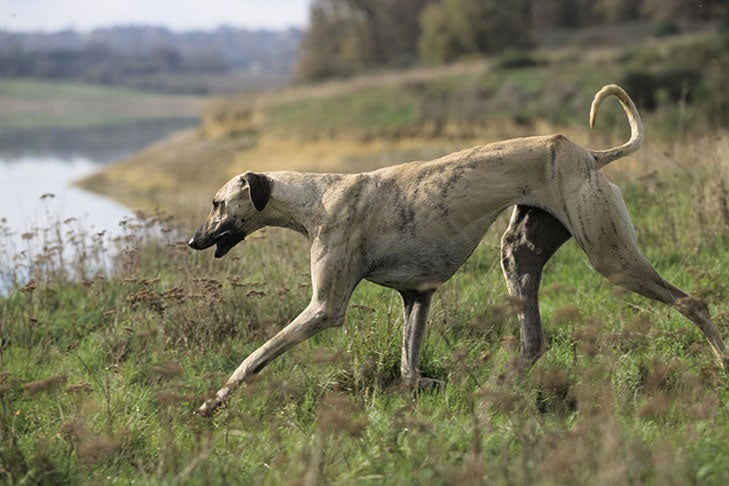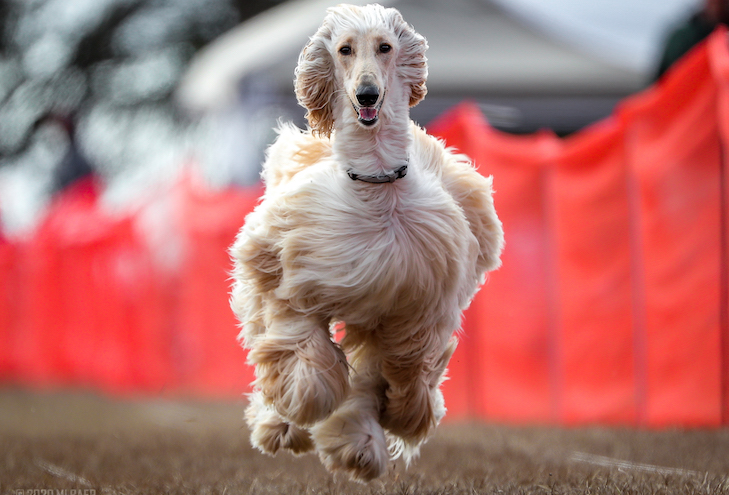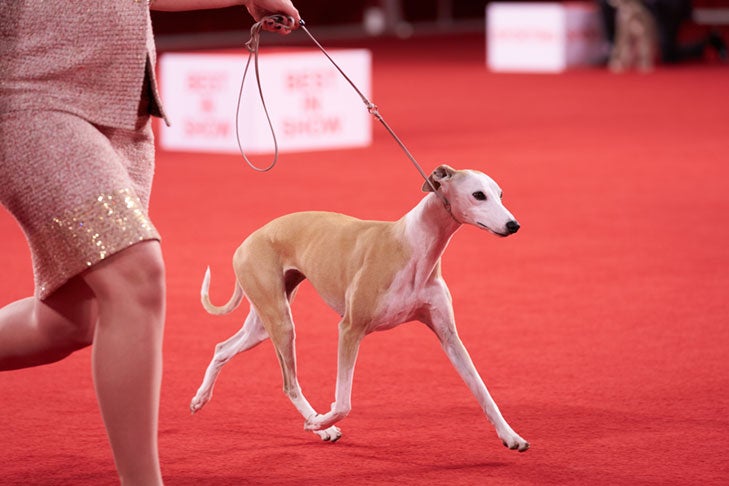
If modern dogs were required to have resumés, most would list their job description as “companion.” But from the badger-battling Dachshund to the sled-pulling Alaskan Malamute, dogs’ bodies – not to mention their brains – still reflect the original purposes for which they were bred.
Indeed, dog breeds display a tremendous variety of not just colors and coats but also sizes and shapes. And that makes comparisons between them difficult. Different breeds have different purposes, with the corresponding body styles to perform relevant tasks. But the wide-ranging physical differences among some breeds can cause super-sized misunderstandings.
Understanding the Size of Sighthounds
Consider, for example, the Sighthounds. From the sleek Saluki of the Arabian peninsula to the plume-tailed Borzoi of the Russian steppes, these breeds have been called “windhounds” for good reason. They needed to be fast enough to overtake very fleet-footed game, such as hare, deer, and even wolf.
As a result of this need for speed, Sighthounds have evolved extremely aerodynamic bodies, with relatively slender bone and a very noticeable “tuck-up,” or waist. In addition, Sighthounds are born with comparatively low stores of body fat and unique metabolisms that make many intolerant to certain types or doses of anesthesia. Some may think these skinny-by-nature breeds are underweight (or, worse, starved) when nothing could be further from the truth.

“Non-Sighthound people routinely think that all dogs should have the same kind of body type and body condition,” says Erika Wyatt, vice president of the American Sloughi Association. Hailing from the North African countries of Morocco, Algeria, and Tunisia, “the Sloughi is a primitive, utilitarian hunter that is hard, racy and powerful – as well as elegant,” she explains. This breed hunted in extreme temperatures over challenging terrain. Wyatt says that “an overweight Sloughi would never survive in such conditions and would almost certainly suffer from heatstroke.”
Wyatt notes that the breed standard for the Sloughi describes a dog whose body and legs show a “defined bony structure.” A Sloughi in prime condition, she continues, “should have the rearmost three ribs faintly visible, prominent hipbones, bony croup, and up to three vertebrae showing.”
Ribs and Hipbones
Protruding hipbones, by the way, aren’t unique to Sloughis. They are also important hallmarks for other Sighthounds like the Afghan Hound and the Azawakh (probably the leanest of all the Sighthounds). While in humans – and many other dog breeds – visible hip bones can be a sign of malnutrition, in these eastern Sighthounds, they are a simple matter of geometry. Their pelvises are set quite steeply, creating a croup, or rump, that is very angled. As a result of their unique placement, these breeds’ hipbones are more evident.

However, there is such a thing as a Sighthound that is too skinny. “If the ribs are protruding too much, or there are too many showing, the dog is too thin,” Wyatt explains. “Similarly, if the dog lacks hard, dry muscle, it is probably not being fed enough.”
But even in these cases, it can be unfair to rush to judgment. Sighthounds, in particular youngsters and adolescents, are notoriously picky about food. That point was made quite clear in 2011 by Hickory the Scottish Deerhound. The morning after winning the Westminster Kennel Club Dog Show, she turned her nose up at the traditional filet mignon served to her on a silver platter at Sardi’s Restaurant in Manhattan. Keeping weight on such fussy eaters can be a challenge for even the most attentive owners.
Sighthounds and Weight
What if a Sighthound eats a lot? Having been bred for centuries to have lithe, rangy bodies, Sighthounds that pack on the pounds can put undue stress on their joints and soft tissue. An overweight dog – Sighthound or otherwise – may simply be more prone to injuries.

Kerrie Kuper of Karasar Whippets lives in Florida, a state that for many years had a large number of Greyhound racetracks. As a result, many Floridians are familiar with the lean, spare silhouettes of those hard-bodied racers. If someone discusses her dogs’ weight with her, Kuper simply offers an analogy to which they can relate.
“I explain that Whippets are runners, and do you see successful runners who are overweight?” she asks rhetorically. “Once you compare them to people, your average person gets it.”
This article is intended solely as general guidance, and does not constitute health or other professional advice. Individual situations and applicable laws vary by jurisdiction, and you are encouraged to obtain appropriate advice from qualified professionals in the applicable jurisdictions. We make no representations or warranties concerning any course of action taken by any person following or otherwise using the information offered or provided in this article, including any such information associated with and provided in connection with third-party products, and we will not be liable for any direct, indirect, consequential, special, exemplary or other damages that may result, including but not limited to economic loss, injury, illness or death.

